Moving electric charge is the definition of current electricity. As can be seen in Figure 1, current consists of the movement of negative electron charges from one atom to another.
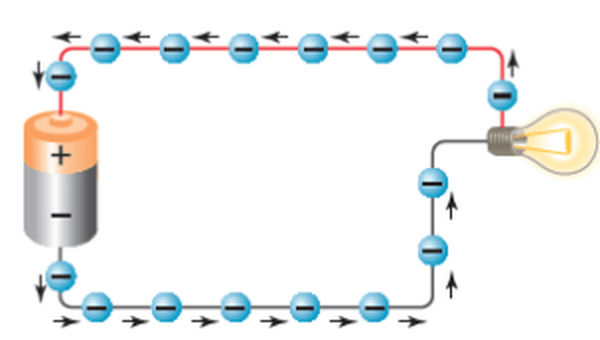
The electromotive force (emf) or voltage supplied by the battery is the external force responsible for the flow of electrons. There are more electrons at the battery’s negative terminal than there are at its positive one.
To make up for its deficiency, the positive battery terminal will draw electrons from the negative terminal via the conductor. When there are too many electrons at the negative terminal, they are repelled into the conductor.
Electric Current Classification
By looking at the direction and frequency of the voltage fluctuations, we can determine whether the current is DC or AC.
When a voltage source produces a direct current, electrons flow only in one direction. When an AC voltage is applied, an AC current of electrons is created, which varies in both direction and intensity.
Figure 2 depicts the common symbols and waveforms used to represent direct current and alternating current voltage. One of the most common forms of direct current (DC) voltage is a battery, while alternating current (AC) voltage is typically supplied by an electrical outlet.
One terminal of a voltage source always has more electrons than the other, and the opposite is always true. This causes a potential difference between the two ends.
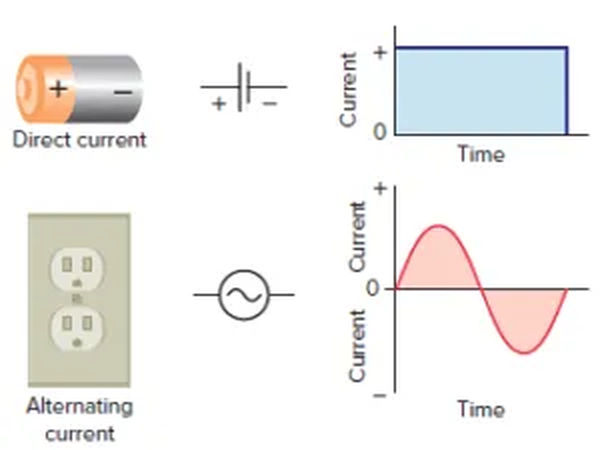
One way to tell different voltage sources apart is by their polarity (+ or ). In direct current circuits, the polarity can be easily determined, but in alternating current circuits, the polarity cannot be determined because the current constantly switches directions.
Sources of Electromotive Force
Electrons require an electromotive force (emf) or voltage source to flow. Several different types of primary energy can be converted into this voltage source. Electricity is produced by converting the energy supplied by these primary sources.
Friction, light, chemical reaction, heat, pressure, and mechanical-magnetic action are all primary sources of electromotive force.
Light
Using solar or photovoltaic (PV) cells, solar photovoltaic power systems directly transform solar radiation into usable electricity. These are constructed from a semiconducting, light-sensitive material that releases electrons when exposed to light (Figure 3).
The photovoltaic effect is what makes solar cells work; it’s what happens when light hits a two-layer semiconductor material and creates a direct current voltage. The voltage generated by the cell is proportional to the amount of light energy that is incident upon it. Silicon cells are highly efficient solar cells.
With the right conditions, a single solar cell can generate up to 400 mV (millivolts) at milliampere current, which can then be used to create larger solar panels. Many electronic devices, including calculators, rely on the electricity supplied by small current solar cells for their operation.
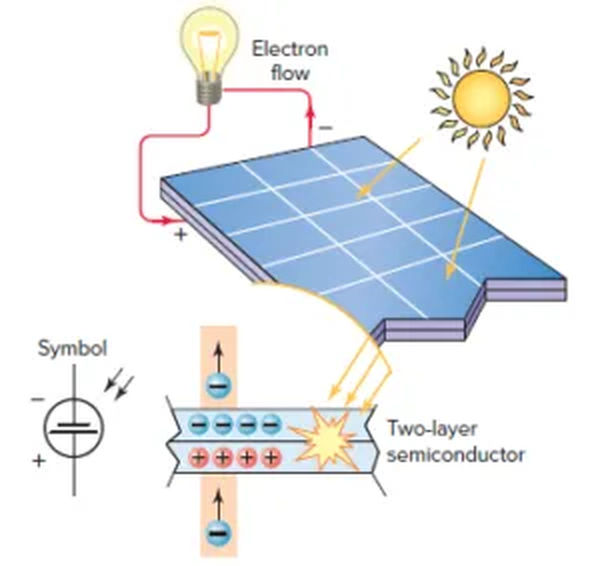
The electrical connections and protective casing of solar cells constitute a solar module or panel (Figure 4). Typically, solar panels have a transparent resin layer between the semiconductor and the elements (including snow, rain, and hail) and a glass sheet (on the side facing the sun). A solar array is a collection of solar panels used to generate and store electrical energy for later use.
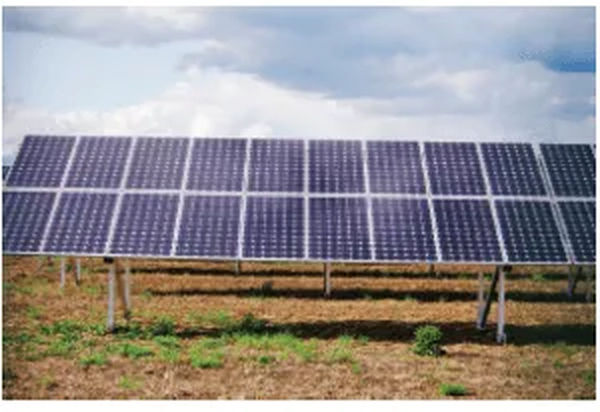
Connecting your solar power system to the local power grid is what’s known as a “grid-tie solar system.” Using a system called “net metering,” you can then sell the extra energy to the utility.
When the sun isn’t shining or the weather is bad, you can always buy electricity from the grid. Your utility bill would be reduced by the amount of electricity you generate with this system, or your account would be credited if you generated more electricity than you used.
Keep in mind that if your utility power goes out, you will need to turn off your grid-tie PV system as well. This is a safety precaution taken to prevent accidental power surges from entering the grid while technicians are repairing it.
The components of a typical grid-connected photovoltaic power system are depicted in Figure 5. In these setups, solar panels are coupled with a DC-to-AC inverter to produce electricity. The inverter converts direct current (DC) to alternating current (AC) and coordinates the power from solar modules with grid power.
The procedure is simple. The solar panels produce DC current when the sun is shining. The inverter instantly links up to the power grid and supplies AC power.
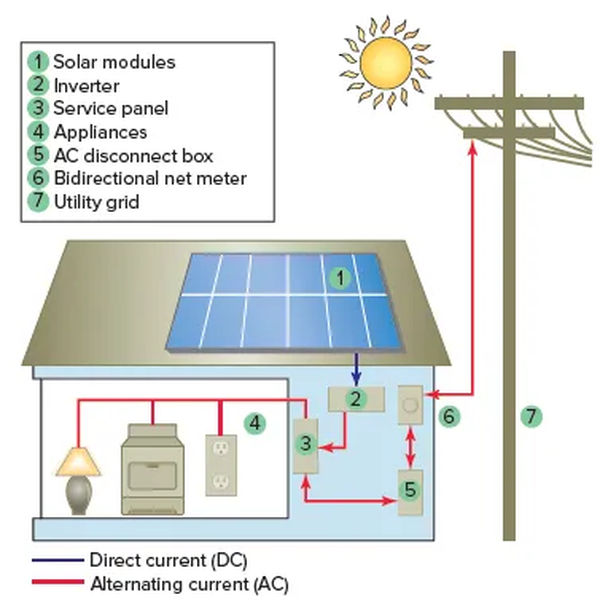
Off-grid PV solar systems are put to use in situations where connecting to an existing power grid would be impractical, undesirable, or prohibitively expensive. Solar panels in an off-grid system generate direct current (DC), which is then stored in a battery bank (Figure 6).
Batteries store energy in the form of direct current (DC), but an inverter changes this to alternating current (AC), which is what is typically found in a home or business. Charge controllers are used in off-grid systems to manage the flow of electricity from renewable sources like solar panels and keep the batteries from overcharging.
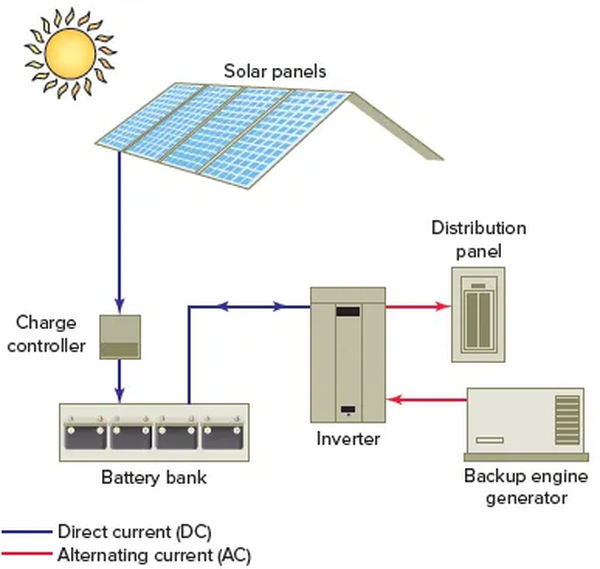
Chemical Reaction
Chemical energy is transformed into electrical energy by the battery or voltaic cell (Figure 7). Two electrodes and a liquid electrolyte make up the bulk of a battery. An electrical circuit typically consists of a pair of electrodes, one of which is connected to the positive (+) terminal and the other to the negative (-) terminal.
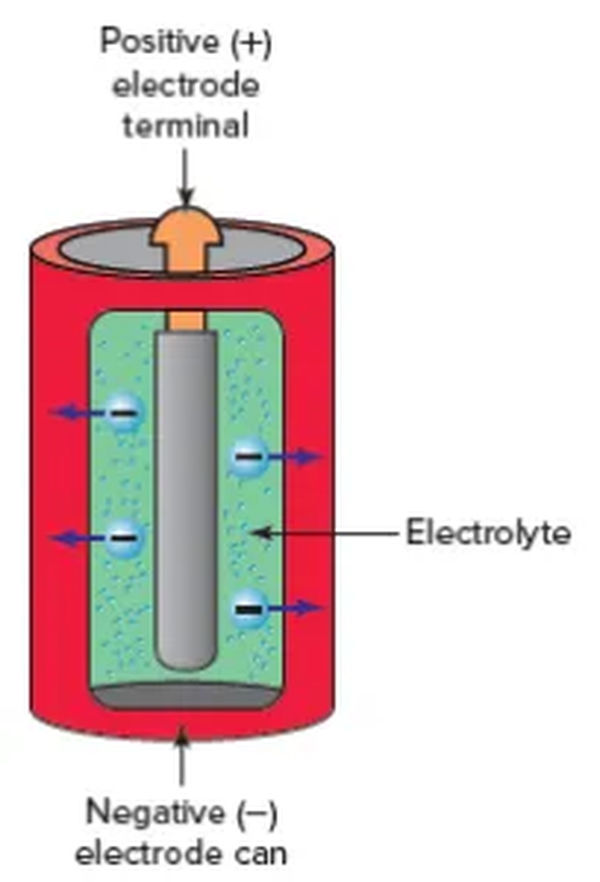
Putting a battery in a circuit that is closed causes the battery’s chemical energy to be converted into electrical energy. Within the cell, electrolyte solution reacts with the two electrodes due to chemical action. This results in the movement of electrons between the two electrodes. This causes an electron to be lost at one electrode and gained at the other, creating a positive and negative charge, respectively. Although batteries are widely used as portable low-voltage DC sources, their relatively high energy cost restricts their usefulness.
Heat
A thermocouple is a device that can directly transform thermal energy into electrical energy. In a thermocouple, the temperature difference between the “hot” and “cold” junctions is measured by measuring the resulting DC voltage across the junctions, which is predictable because of the use of the junctions’ dissimilar metals (Figure 8).
Applying heat to the hot junction causes electrons to flow from one metal to the other, ultimately charging one metal negatively and the other positively. In thermometers and other instruments that measure temperatures, a thermocouple is typically used as the probe. The temperature can be read off by connecting a voltmeter with a degree scale across the external thermocouple leads.
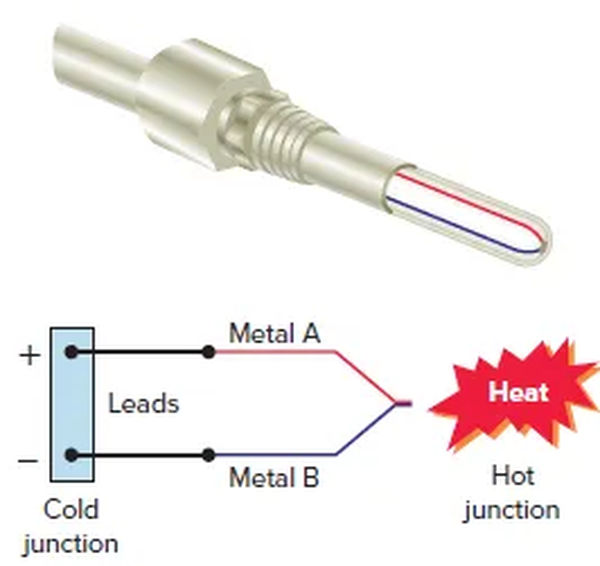
Piezoelectric Effect
The application of mechanical pressure to a piezoelectric material causes the material to generate an electric charge. Quartz, among other crystals, has piezoelectric properties. Thus, they produce an electric charge when subjected to mechanical stress, such as when being squeezed or struck.
An example of a device that makes use of piezoelectricity is the piezo gas igniter shown in Figure 9. When the button is depressed, a piezo crystal’s surface will rise, allowing a tiny hammer to launch upwards with the help of a spring. High voltage is generated when the hammer reaches the top and is released to strike the crystal. These levels of voltage are sufficient to create a spark that can set the gas on fire. Most gas stoves and heaters today use piezoelectric igniters.
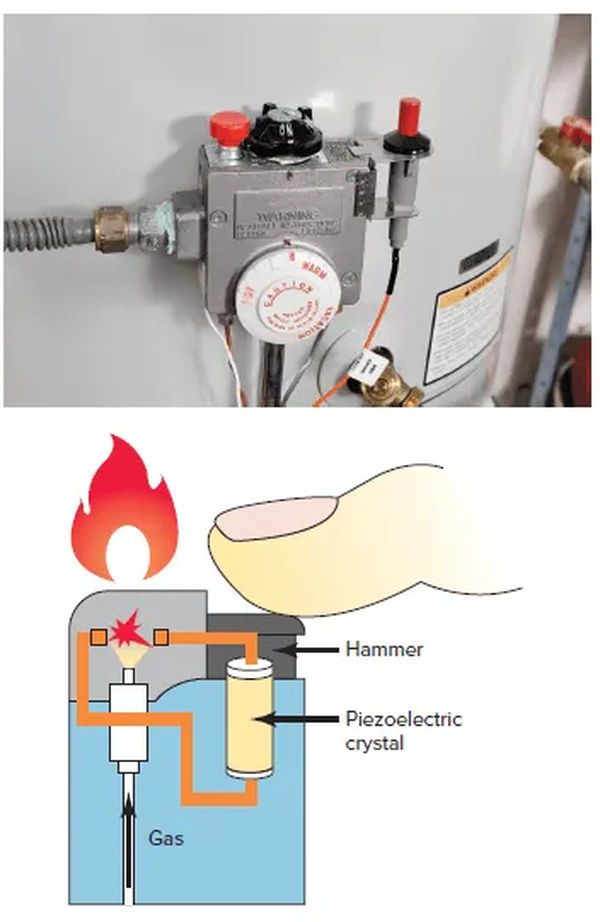
Mechanical-Magnetic
Most of the power we use comes from electric generators, which take mechanical and magnetic energy and transform it into electricity. Figure 10 depicts the fundamental make-up and operation of an AC generator.
The armature winding receives an induced voltage as it rotates through the magnetic field. The armature is equipped with slip rings, which allow for rotation. The carbon brushes ride up against the slip rings, transferring power from the armature to the slip rings.
The armature of a DC motor consists of a collection of loops of conductive wire that rotate in response to the applied magnetic field. Only one loop is displayed for clarity’s sake. This generator is capable of generating either alternating current (AC) or direct current (DC), depending on the specifications.
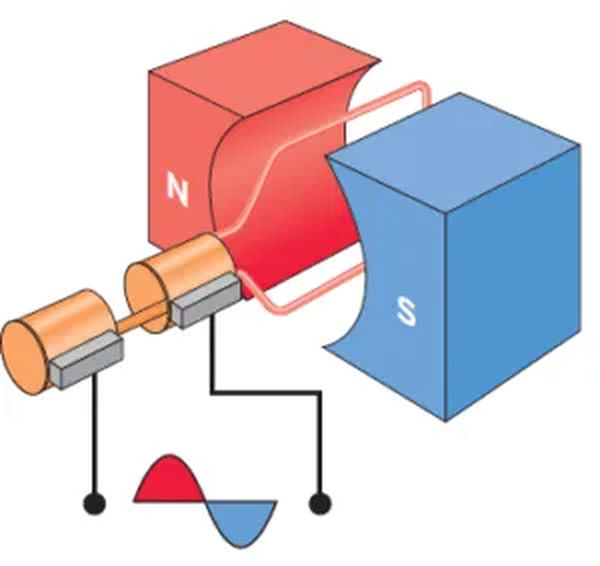
Every single generator needs to be powered by either a turbine, diesel engine, or some other mechanical energy source. The mechanical component that powers the generator is called a prime mover.
More mechanical energy from the prime mover is needed to produce the same amount of electricity from a generator. Wind turbines, for instance, must be placed in areas that regularly experience high wind speeds (Figure 11). In order to generate electricity, the wind must push against the wind turbine’s fan blades, which in turn spins a shaft and generator. Batteries can be charged or power used immediately.
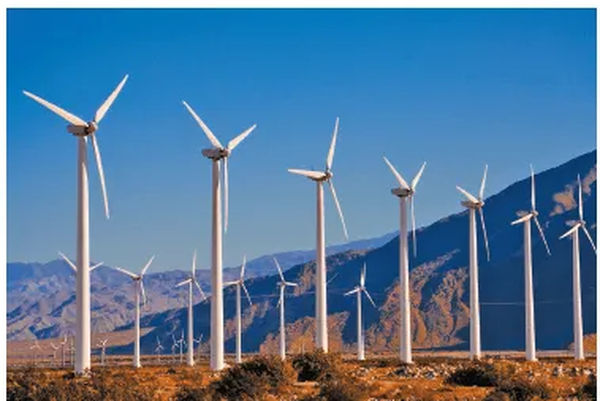
Questions and Answer
What is electric current?
The movement of electrons is known as electric current.
To what extent does electron flow result from an external force?
The electromotive force (voltage) is the external force responsible for electron flow.
With respect to the polarity of the applied voltage, in which direction do electrons flow?
The movement of electrons is always from negative to positive.
Examine the difference between direct current (DC) and alternating current (AC) current.
A direct current (DC) circuit has unidirectional current flow. Current reverses direction in an alternating current circuit.
Why is it common practice to label DC voltage sources with their polarity but AC sources are not?
Since DC circuit polarity is constant, it can be easily identified. Due to the unpredictable nature of an AC circuit, polarity is typically not marked.
Just how does a PV cell convert light into usable electricity?
A photovoltaic cell is a device that converts the energy of light into a direct current voltage.
Evaluate how both grid-connected and standalone PV solar power systems function.
If you have a photovoltaic (PV) system that is wired into the local utility’s distribution network, you can make money by selling excess power to the grid. A photovoltaic (PV) system that is “off-grid” is one that is not connected to the public power grid.
What is the inverter’s role in a solar power system?
The inverter transforms the system’s direct current (DC) voltage into alternating current (AC) suitable for use within the system or for connection to the utility grid.
What are the three primary materials that make up a battery?
Two electrodes are separated by the electrolyte solution in a battery.
Thermocouples generate electricity in what way?
When there is a temperature difference between the two thermocouples, DC electricity is generated (which are the junction of two dissimilar metals.)
How does a piezoelectric material generate a voltage?
Whenever mechanical force is applied, DC electricity is generated from a piezoelectric material.
Explain the process by which an electrical generator creates electrical current.
An electric generator converts mechanical energy into electrical energy by spinning a coil of wires in a magnetic field.